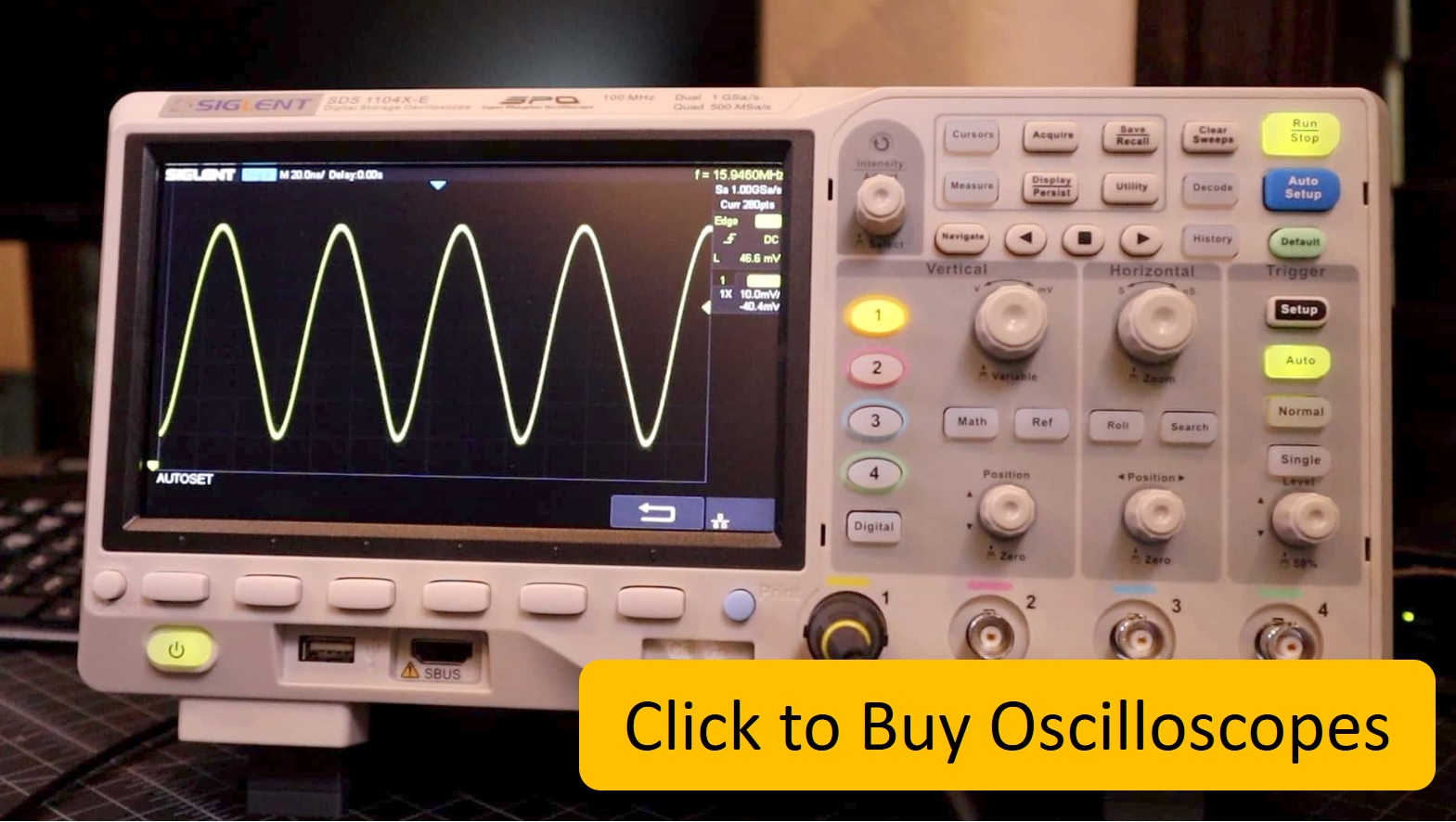Table of Contents
Who has studied electronics engineering and not interacted with Oscilloscopes? Anyone in electronics engineering would be able of these digital devices.
Oscilloscopes or oscillograph are very important tools in electronics engineering, and used in testing too. These devices enable waveforms to be seen on the display so that one can easily see any problems and do the testing of an electronic circuit.
These waveforms are then used for analyzing different properties like frequency, amplitude, distortion, time interval etc.
Cathode Ray Oscilloscopes/Digital Storage Oscilloscopes?
Oscilloscopes are are often called as Cathode Ray Oscilloscope (CRO) too. This is because they use cathode ray tubes to display the waveforms on the device. Many people call them as Digital Storage Oscilloscope(DSO) also.
But now-a-days they are simply called oscilloscopes or even shorter name than that ‘scopes’. With time, names also get shorter:)
How to read Oscilloscope?
Based on the input Oscilloscope produces waveforms which are two dimensional. These waveforms are shown on some sort of display for the analysis. Time is displayed on X-axis while amplitude is shown on Y-axis. By seeing the formation of waveform on the display, it is possible to test the problem that occurs in any electronic circuit.
Why are Oscilloscopes important?
Oscilloscopes are used in the testing of electronics circuits like Television, lights, Air conditioners etc. which are made of circuits.
A circuit is a path with input and output through which current floes. Voltage is the force that makes current to flow between two points by creating potential difference.
Sometimes, when the voltage does not work properly the circuit starts showing problems. In order to find actual problem testing is needed for which oscilloscopes are used.
Oscilloscopes tell the actual root cause of the problem therefor, play an important role in electronics.
Different Types of Oscilloscopes
There are broadly two categories of Oscilloscopes:
-
- Analog Oscilloscope
: Buy Analog oscilloscope Online
- Digital Oscilloscope: Buy Digital Oscilloscope Online
- Analog Oscilloscope
Both types of oscilloscopes have their own pros and cons and respective usage based on that. Let us study about the advantages and disadvantages of Analog and Digital oscilloscopes which decide which type of the scopes one should use.
1. Analog Oscilloscope
Advantages of Analog Oscilloscope
- Analog oscilloscopes are cheaper than digital ones
- Provides accurate performances for laboratory exercises
- For measurement, Analog oscilloscopes do not need ADC, µP (Microprocessor) or acquisition memory
Disadvantages of Analog Oscilloscope
- Since this are analog so not so easy to use and need to have some hands-on training on this
- Does not provide extra features that come with digital oscilloscopes
- Not suitable for analyzing high frequency sharp-rise-time transients purposes in electronics circuits
2. Digital Oscilloscope
Advantages of Digital Oscilloscope
- Real-time signal accuracy and high storage memory are the best features of digital oscilloscopes
- Suitable for analyzing high frequency transients as they have advanced DSP algorithms.
Disadvantages of Digital Oscilloscope
- Unlike Analog oscilloscopes, they require ADC, µP and acquisition memory
- These are costlier as compared to Analog oscilloscopes.




